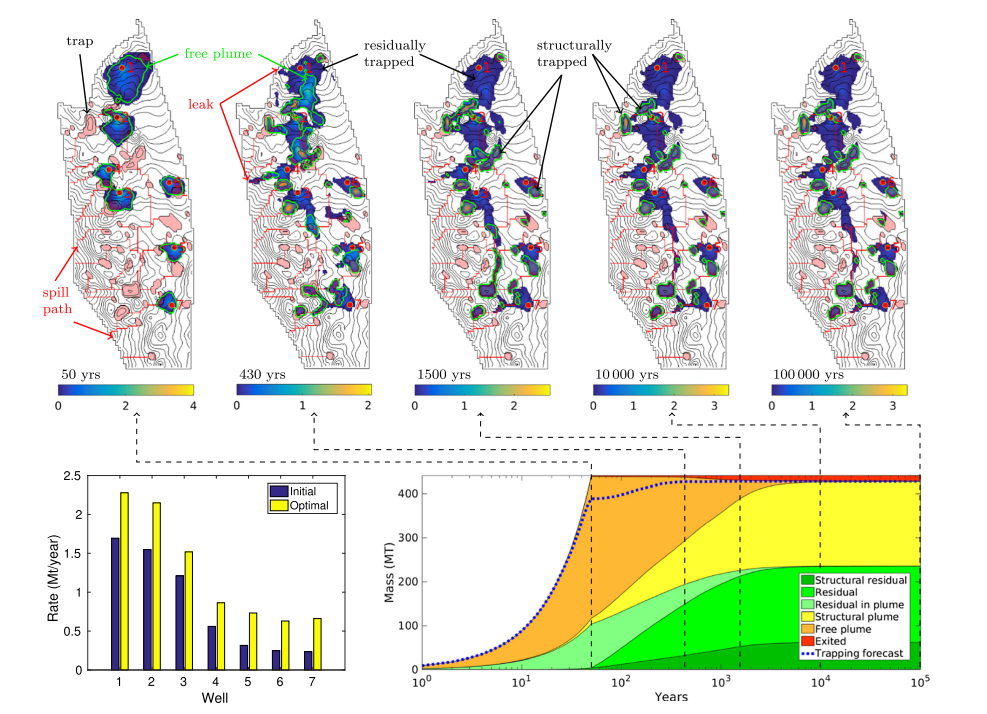In the project, we develop specialized software for in-depth analysis of potential storage sites in terms of storage capacity, optimal use, and long-time containment. Our methods utilize mathematical formulations especially developed for modelling CO2-storage and are therefore able to produce better and more rapid results than existing 3D-simulators. In particular, we have focused on methods that allow for efficient computation of parameter sensitivities, which can be used in automatic simulation frameworks either for finding optimal site utilization or for integrating monitoring data.
The software developed in the project is released as part of MRST-co2lab and can be used to estimate maximal storage potential, identify optimal strategies for injection and to estimate model parameters from observed data.
Simulation and optimization of large-scale, aquifer-wide injection CO2 injection in the North Sea
For CO2 capture and storage to play a relevant role in the reduction of European emissions, activities need to be scaled up significantly from what we are doing today. This will require good estimates on how much CO2 can be practically and safely stored at each site. To minimize risk of leakage, it is also necessary to have a good understanding of the long-term fate of the injected CO2, thousands of years into the future. Commonly used simulation tools today are of limited use to address these questions as they are primarily developed to meet the needs of the petroleum industry.
Contact persons

Key facts
Project duration
2015 - 2018

